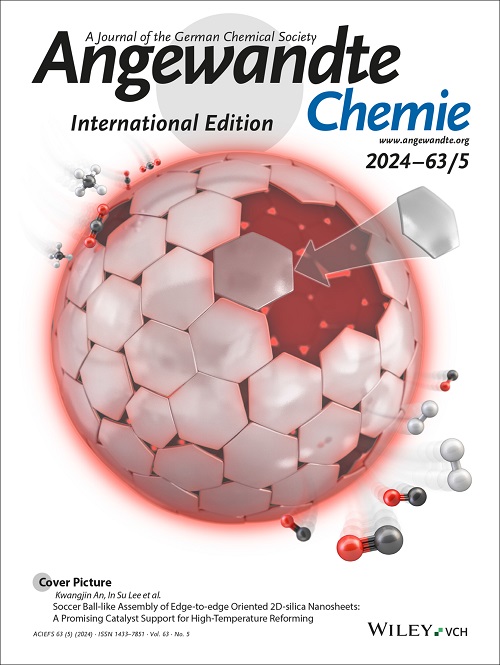Topological Control over Porphyrin-Based Covalent Organic Frameworks for Elucidating Electron Transfer Characteristics
IF 16.1
1区 化学
Q1 CHEMISTRY, MULTIDISCIPLINARY
引用次数: 0
Abstract
Two-dimensional covalent organic frameworks (2D COFs) have emerged as promising functional materials due to their programmable architectures and tunable functionalities. Nevertheless, the structural diversity of porphyrin-based 2D COFs remains restricted by the prevalent use of sql topology, hindering comprehensive structure-property exploration. Herein, we systematically designed and synthesized porphyrinic 2D COFs featuring distinct sql and bex topological configurations. Comprehensive structural characterization confirmed precise control over lattice geometries, revealing monoporous structure in sql topology versus biporous architecture in bex topology. Electrochemical investigations uncovered topologygoverned electron transport characteristics, with the unique coordination geometry of bex topology exhibiting enhanced electron transfer efficiency. Band structure analysis demonstrated that topological configuration and chemical composition collectively modulate electronic structures. Inspired by these findings, we developed nickel-incorporated bex-COFs for electrocatalytic oxygen evolution. The optimized Ni-BBFPP-TAPP-COF with bex topology demonstrated remarkable catalytic performance, achieving a low overpotential of 342 mV at 10 mA cm−2, which surpasses most reported porphyrin-based electrocatalysts. This study not only significantly expands the structural repertoire of porphyrinic COFs, but also establishes explicit correlations between topological engineering and electrocatalytic performance, providing fundamental design principles for advanced energy conversion materials.基于卟啉的共价有机框架的拓扑控制以阐明电子转移特性
二维共价有机框架(2D COFs)由于其可编程的结构和可调的功能而成为有前途的功能材料。然而,基于卟啉的二维COFs的结构多样性仍然受到普遍使用的sql拓扑的限制,阻碍了全面的结构-性质探索。本文系统地设计和合成了具有不同sql和bex拓扑结构的卟啉类二维COFs。全面的结构表征证实了对晶格几何形状的精确控制,揭示了sql拓扑中的单孔结构与bex拓扑中的双孔结构。电化学研究揭示了拓扑控制的电子传递特性,bex拓扑独特的配位几何结构显示出增强的电子传递效率。能带结构分析表明,拓扑构型和化学成分共同调节电子结构。受这些发现的启发,我们开发了镍掺杂的bex-COFs用于电催化析氧。优化后的具有bex拓扑结构的Ni-BBFPP-TAPP-COF表现出了卓越的催化性能,在10 mA cm−2下实现了342 mV的低过电位,超过了大多数基于卟啉的电催化剂。该研究不仅显著扩展了卟啉COFs的结构库,而且建立了拓扑工程与电催化性能之间的明确相关性,为先进的能量转换材料的设计提供了基本原则。
本文章由计算机程序翻译,如有差异,请以英文原文为准。
求助全文
约1分钟内获得全文
求助全文
来源期刊
CiteScore
26.60
自引率
6.60%
发文量
3549
审稿时长
1.5 months
期刊介绍:
Angewandte Chemie, a journal of the German Chemical Society (GDCh), maintains a leading position among scholarly journals in general chemistry with an impressive Impact Factor of 16.6 (2022 Journal Citation Reports, Clarivate, 2023). Published weekly in a reader-friendly format, it features new articles almost every day. Established in 1887, Angewandte Chemie is a prominent chemistry journal, offering a dynamic blend of Review-type articles, Highlights, Communications, and Research Articles on a weekly basis, making it unique in the field.

 求助内容:
求助内容: 应助结果提醒方式:
应助结果提醒方式:


